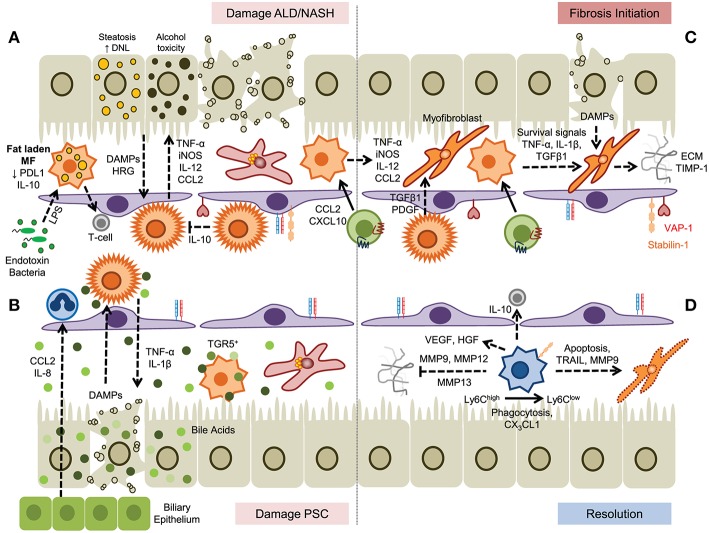Figure 3.
A dual role for myeloid cells in the establishment and resolution of chronic liver disease. (A) Hepatocyte damage driven by steatosis or alcohol toxicity activates KC which secrete proinflammatory cytokines that drive disease progression and promotes infiltration of myeloid cells. In steatotic livers fat laden macrophages exhibit impaired endotoxin responses but may prime T-cell mediated immunity. (B) Cholangiocyte-derived chemokines promote recruitment of hepatic neutrophils and subsequent damage to hepatocytes promotes further inflammation. Bile acids promote KC inflammasome formation; however this can be suppressed through binding of bile salts to TGR5 expressed by monocyte-derived macrophages. (C) Secretion of soluble factors by KC and monocyte-derived macrophages promotes fibrosis through the activation and differentiation of hepatic stellate cells, promoting survival of myofibroblasts and the generation of extracellular matrix proteins. (D) Resolution of fibrosis is mediated by Ly6Clow macrophages, generated from Ly6Chigh precursors, by degradation of ECM by matrix metalloproteinases, induced apoptosis of hepatic stellate cells and myofibroblasts, and secretion of anti-inflammatory cytokines.

